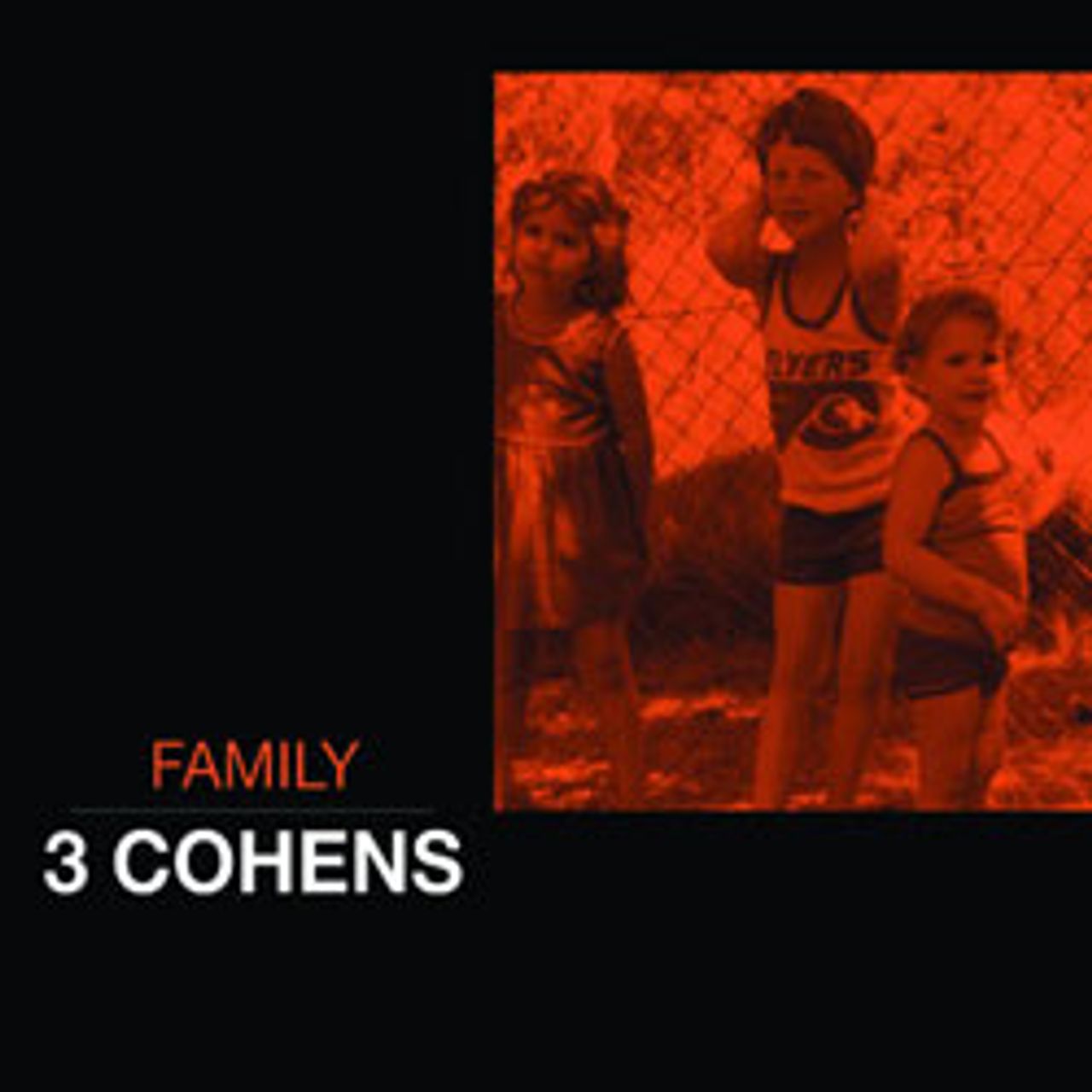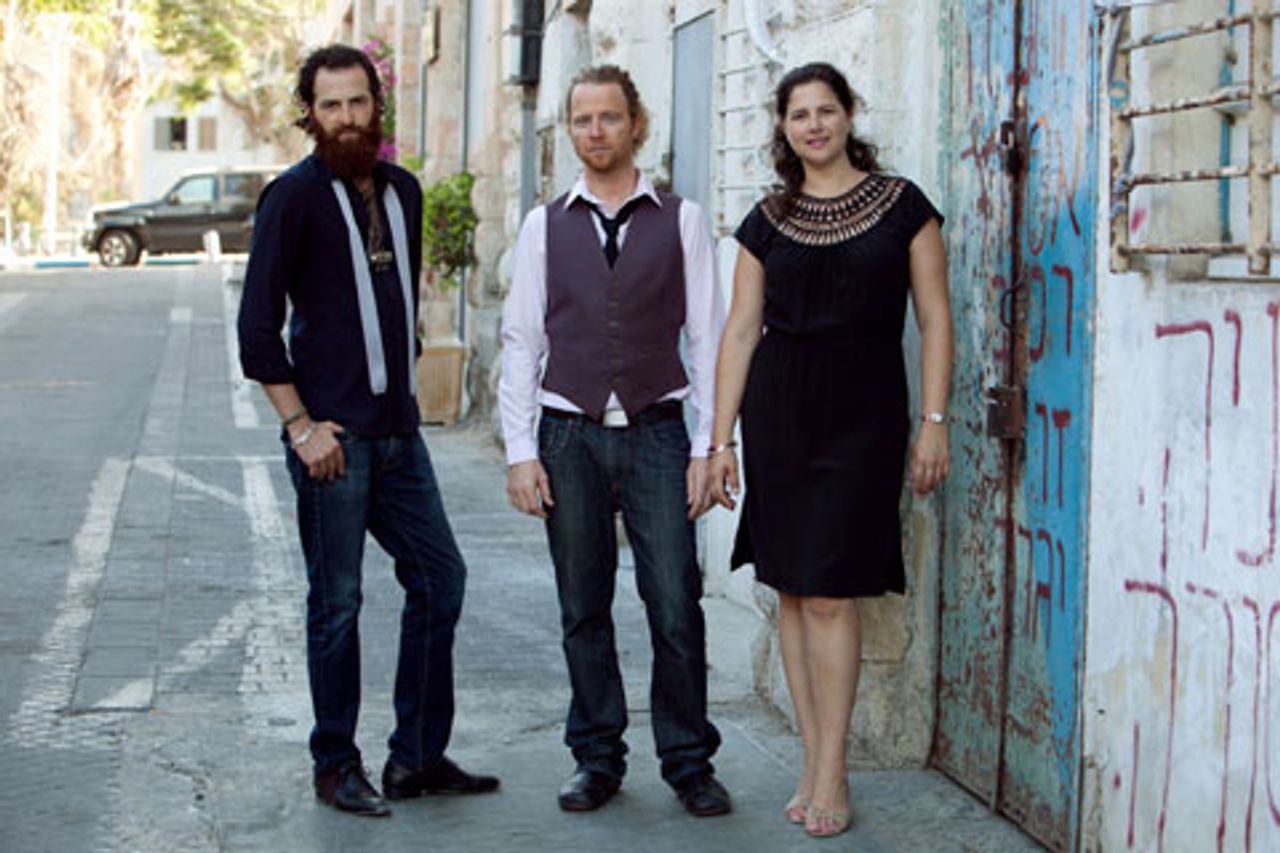
Family is the latest album by 3 Cohens, the jazz group comprised of Israeli-born siblings Avishai, Anat and Yuval Cohen. In recent years, each of the Cohens have made a name for themselves in the jazz world as solo artists. They began recording together as a group in 2003 and have produced two previous albums together, One (2004) and Braid (2007).
Avishai Cohen, not to be confused with the bassist of the same name, is a remarkable trumpeter. He has recorded a number of albums of his own, most recently Introducing Triveni (2010). He is an inventive soloist with a full, rich sound on his instrument. Whether exploring the depths or the heights of the trumpet’s range (he takes such flights sparingly), his tone and control over his instrument rarely falters.
Multi-reedist Anat Cohen is perhaps the most popular of the three siblings. She is a talented performer, but not without her limitations. Her recordings with larger ensembles have leaned toward the smooth and “grandiose.” Some of the music has a mannered quality and lacks dramatic tension.
As a clarinetist, however, she is frequently excellent. Her 2010 album Clarinetwork: Live at the Village Vanguard, performed with a small, hard-swinging combo, is well worth hearing. The intensity lacking in some of her other work is found there in large supply.
Soprano saxophonist Yuval Cohen has two fine solo albums to his credit, including a beautiful collection of duet recordings with pianist Shai Maestro called Song Without Words (2011). There is a soft and airy quality to his sound which he is able to maintain even as he soars into the instrument’s higher register. He is a sensitive improviser, with a gift for listening to and conversing with his fellow musicians.
 3 Cohens by Eitan Riklis Tel Aviv 2011
3 Cohens by Eitan Riklis Tel Aviv 2011Family includes a mix of standards and original compositions. The “family” of the album’s title refers not just to the Cohens themselves, but to the “family” of jazz itself, including its many different styles. A passion for the music, from its earliest incarnations through to swing, bebop and beyond makes itself felt in the performances. The soloists perform admirably throughout and the music grooves and swings, thanks in no small part to the unshakable rhythm section of pianist Aaron Goldberg, bassist Matt Penman and drummer Gregory Hutchinson.
For all of its strengths, however, there is something not entirely satisfying about the work. It never quite rises to the level of the Cohens’ more interesting solo projects.
The hard-driving blues shuffle, “Shufla De Shufla,” starts the album off on a strong note, with the growling plunger effect of Avishai’s trumpet taking center stage.
A forceful rendition of Duke Ellington’s “The Mooch,” with those unmistakable wailing horns stating the opening theme, provides another of the album’s highlights. It is Avishai again who draws the listener’s attention more than anyone. The song’s most memorable feature is his solo toward the middle of the song, punctuated by prodding staccato phrases which give way finally to longer, fuller runs. This is a musician who knows how to build a solo, using dynamics of tension and release to great effect.
“Rhapsody in Blake” is a bebop number with a spirited theme played in unison by all three horns. A large section in the middle of the song, however, in which all three siblings solo together, becomes a bit muddy, dragging on the forward momentum of the song.
“Blues for Dandi’s Orange Bull Chasing an Orange Sack” opens with lovely, almost meticulous figures played with a gentle touch by Goldberg in the piano’s high end. However, the song features a sudden shift in tempo toward the beginning which feels somewhat awkward and forced. It does not feel “dramatically” necessary, if one can use the word. Avishai has also elected to imitate Miles Davis, both in his tone and phrasing, during much of his solo, contributing further to a number of distractions which prevent one from making a connection with the music.
“With the Soul of the Greatest of Them All” was envisioned as a tribute to bassist and composer Charles Mingus. But in adopting his most recognizable cliches, the effects which Mingus may himself have been guilty of using once too often—including those Ellingtonian “talking” horns—the song begins to feel more like parody. There is even a quote of Mingus’s “Haitian Fight Song” towards the very end of the piece. The musicians perform the piece well enough, but one is left wondering why the Cohens did not just record one of Mingus’s own compositions to begin with.
The inclusion of a recording of “Tiger Rag” is an unexpected choice. The song was a staple in the repertoire of early jazz musicians from the 1910s through to the swing era of the 30s. Louis Armstrong, the Mills Brothers and Art Tatum all recorded versions which endure. The Cohens have come as close to anyone as pulling it off in a more modern setting, but the performance never quite escapes the feeling of a novelty.
“Do You Know What It Means to Miss New Orleans,” fares much better. The song, which debuted in 1947, has taken on a whole new resonance since the Hurricane Katrina disaster in 2005. To hear the song today is to conjure up a wealth of memory and feeling about that horrible event. The soloists perform with sensitivity and restraint, always remaining within the emotional framework of the song as they push, expand and elaborate on the feeling to be communicated there.
Two songs on Family, “On the Sunny Side of the Street” and “Roll ’Em Pete,” feature veteran singer Jon Hendricks, best known for his work with vocal group Lambert, Hendricks and Ross during the late 1950s and 60s. At 90, Hendricks’ voice is not what it once was, but he still sings with a spirit and looseness that continue to entertain.
With the exception of one or two songs, the album on the whole is playful and light, perhaps a little too playful and light. Only on the title track, “Family,” do the Cohens truly seem to be at their best. The song features a warm arrangement of horns with interweaving lead lines played by each of the musicians. It all blends so seamlessly that one can hardly tell which musician is which. It’s a beautiful ensemble performance.
That song is the only time one feels the musicians have stopped trying to make a classic hard bop or bebop recording, or a classic New Orleans record, and are finally being themselves, so to speak. It is the only time when the Cohens truly seem to be looking forward rather than back over their shoulders.
